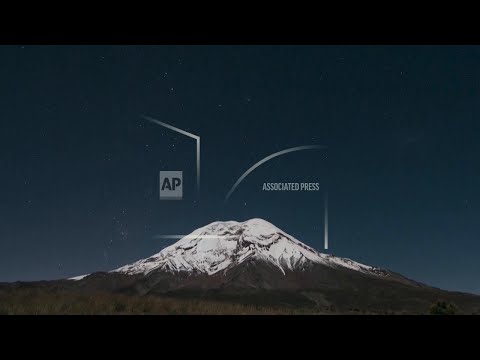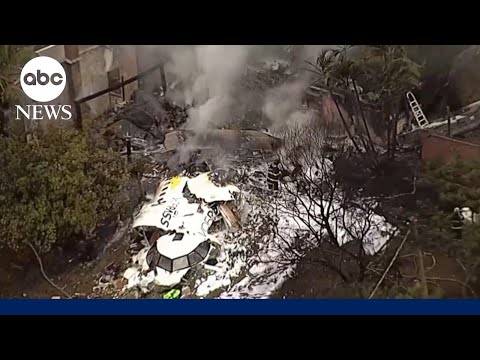(14 Aug 2025)
ASSOCIATED PRESS
ARCHIVE: Chimborazo, Ecuador – 6 February 2020
++MUTE++
1. Various shots of stars and planets in the night sky above the volcano Chimborazo
ASSOCIATED PRESS
Houston, Texas, US – 12 August 2025
+VIDEO CALL+
2. SOUNDBITE (English) Carolyn Sumners, Houston Museum of Natural Science:
"Planet parade is when, if you look in the same old part of the sky at the same time, there’s a bunch of planets. And that’s what we call a planet parade. So in this case, our parade happens in the morning. We’re talking about an hour before sunrise. Don’t get up any earlier, but you can’t get much later because the sun’s gonna blow this away."
ASSOCIATED PRESS
ARCHIVE: Leicester, UK – 15 January 2025
3. Wide set up shot of Dhara Patel turning tellurion
4. Cutaway of hands turning wheel
5. Reverse angle shot through tellurion
6. Close of the Earth spinning around the sun
7. SOUNDBITE: (English) Dhara Patel, space expert, National Space Centre
"So a planetary parade people might often think of as planets lining up in the sky, or more so in space. So when we see pictures from NASA or in textbooks, they’re often drawn side by side. When we talk about a planetary parade as something you can see in the sky it’s that the planets appear in a roughly line-like position across the sky."
8. Wide of Dhara Patel creating model with marbles to depict the position of the planets during the planetary parade in January 2025
9. Low angle of same
10. Close of the January 2025 planetary parade model
NASA – Must credit NASA
ARCHIVE: 14 March 1996
11. STILL showing computer simulated global view of the northern hemisphere displayed in a global view of the surface of Venus. (NASA Magellan synthetic aperture radar mosaics from the first cycle of Magellan mapping were mapped onto a computer-simulated globe to create the image)
NASA – Must credit NASA
ARCHIVE: 24 January 24 1995
12. STILL of NASA Hubble Space Telescope ultraviolet-light image of the planet Venus, taken when Venus was at a distance of 70.6 million miles 113.6 million kilometers from Earth
NASA, Space Telescope Science Institute STScI – MUST CREDIT
13. STILL this photo made available by NASA shows the planet Jupiter, captured by the Hubble Space Telescope, on June 27, 2019.
NASA – MUST CREDIT
ARCHIVE: 2 January 2010
14. This Jan. 2, 2010 image made available by NASA shows the planet Saturn, as seen from the Cassini spacecraft.
NASA – MUST CREDIT
ARCHIVE: 2 January 2010
15. This April 25, 2007 image made available by NASA shows a part of the rings of the planet Saturn, as seen from the Cassini spacecraft.
NASA – MUST CREDIT
ARCHIVE: 11 November 2019
16. Various STILLS released by NASA’s Solar Dynamics Observatory shows Mercury as it passes between Earth and the sun
NASA – MUST CREDIT
Date not supplied
17. STILL of Uranus and Neptune (Text reads – telescope needed for Uranus and Neptune – in reference to a previous planetary parade)
ASSOCIATED PRESS
Houston, Texas, US – 12 August 2025
+VIDEO CALL+
18. SOUNDBITE (English) Carolyn Sumners, Houston Museum of Natural Science:
NASA TV
19. Various animation of Mercury transit across the sun ++MUTE++
ASSOCIATED PRESS
Houston, Texas, US – 12 August 2025
+VIDEO CALL+
20. SOUNDBITE (English) Carolyn Sumners, Houston Museum of Natural Science:
"Mercury just kind of crawls away from the sun for a few nights and we can see it right after sunset or right before sunrise then it goes and hides behind the sun again as it goes around the sun. That’s why it’s a tricky planet to observe, but it’s there."
Find out more about AP Archive: http://www.aparchive.com/HowWeWork
Twitter: https://twitter.com/AP_Archive
Facebook: https://www.facebook.com/APArchives
Instagram: https://www.instagram.com/APNews/
You can license this story through AP Archive: http://www.aparchive.com/metadata/youtube/2ba58edce2ee4318a3629084d53f99c4
Author: AP Archive
Go to Source
News post in August 19, 2025, 3:07 pm.
Visit Our Sponsor’s:
News Post In – News





